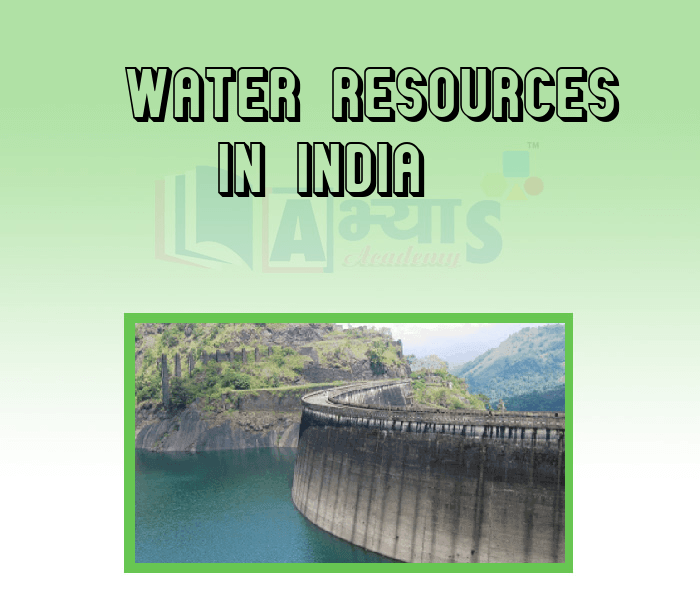Water Resources In India










Water Resources In India
Water Resources:
Much of the rain is a gift of the monsoon and is primarily orthographic. The annual rainfall of 116 cm is only marginally higher than the global mean of 99 cm. Spatial distribution of rainfall in India is characterised by great unevenness. While Mawsynram, located in the southern face of Meghalaya plateau, receives the highest annual rainfall in world, India also has one of the driest regions of world, ie. Jaisalmer, located in the western part of the country. Generally, rainfall decreases from east to west.
India has 4 per cent of the freshwater reserve of the world. The annually replenishable groundwater has been estimated at 432 billion cubic meters (BCM). The Ganga basin has the highest potential followed by the Godavari and the Brahmaputra. The Indo-Gangetic alluvial plain, with an area of around 25,000 kım, is one of the largest groundwater reservoirs in the world. Of the total groundwater of India, only 30 percent has been harnessed. Overuse of groundwater in almost all the states of India has led to ground water depletion in large parts of the country. In certain areas, like Punjab, the level of groundwater exploitation is over 98 per cent.
India is rich in terms of surface water wealth. It has some of the largest rives of world, e.g. the Brahmaputra (2,900 km), the Indus (2,810 km) and the Ganga (2,525 km). Besides, there are many other large river basins, with basin area of more than 20,000 km². Some of its lakes are internationally known, eg. Chilka, Wular, Sambhar etc. Rainfall is the main source of surface water in India. It receives about 4.000 BCM of water from precipitation. Of this, monsoon rainfall accounts for about 3,000 BCM.
Students / Parents Reviews [10]
A marvelous experience with Abhyas. I am glad to share that my ward has achieved more than enough at the Ambala ABHYAS centre. Years have passed on and more and more he has gained. May the centre flourish and develop day by day by the grace of God.

Archit Segal
7thOne of the best institutes to develope a child interest in studies.Provides SST and English knowledge also unlike other institutes. Teachers are co operative and friendly online tests andPPT develope practical knowledge also.

Aman Kumar Shrivastava
10thMy experience was very good with Abhyas academy. I am studying here from 6th class and I am satisfied by its results in my life. I improved a lot here ahead of school syllabus.

Ayan Ghosh
8thMy experience with Abhyas academy is very good. I did not think that my every subject coming here will be so strong. The main thing is that the online tests had made me learn here more things.

Hiya Gupta
8thAbhyas is a complete education Institute. Here extreme care is taken by teacher with the help of regular exam. Extra classes also conducted by the institute, if the student is weak.

Om Umang
10thIt has a great methodology. Students here can get analysis to their test quickly.We can learn easily through PPTs and the testing methods are good. We know that where we have to practice

Barkha Arora
10thBeing a parent, I saw my daughter improvement in her studies by seeing a good result in all day to day compititive exam TMO, NSO, IEO etc and as well as studies. I have got a fruitful result from my daughter.

Prisha Gupta
8thIt was a good experience with Abhyas Academy. I even faced problems in starting but slowly and steadily overcomed. Especially reasoning classes helped me a lot.

Cheshta
10thIt was good as the experience because as we had come here we had been improved in a such envirnment created here.Extra is taught which is beneficial for future.

Eshan Arora
8thAbout Abhyas metholodology the teachers are very nice and hardworking toward students.The Centre Head Mrs Anu Sethi is also a brilliant teacher.Abhyas has taught me how to overcome problems and has always taken my doubts and suppoeted me.
